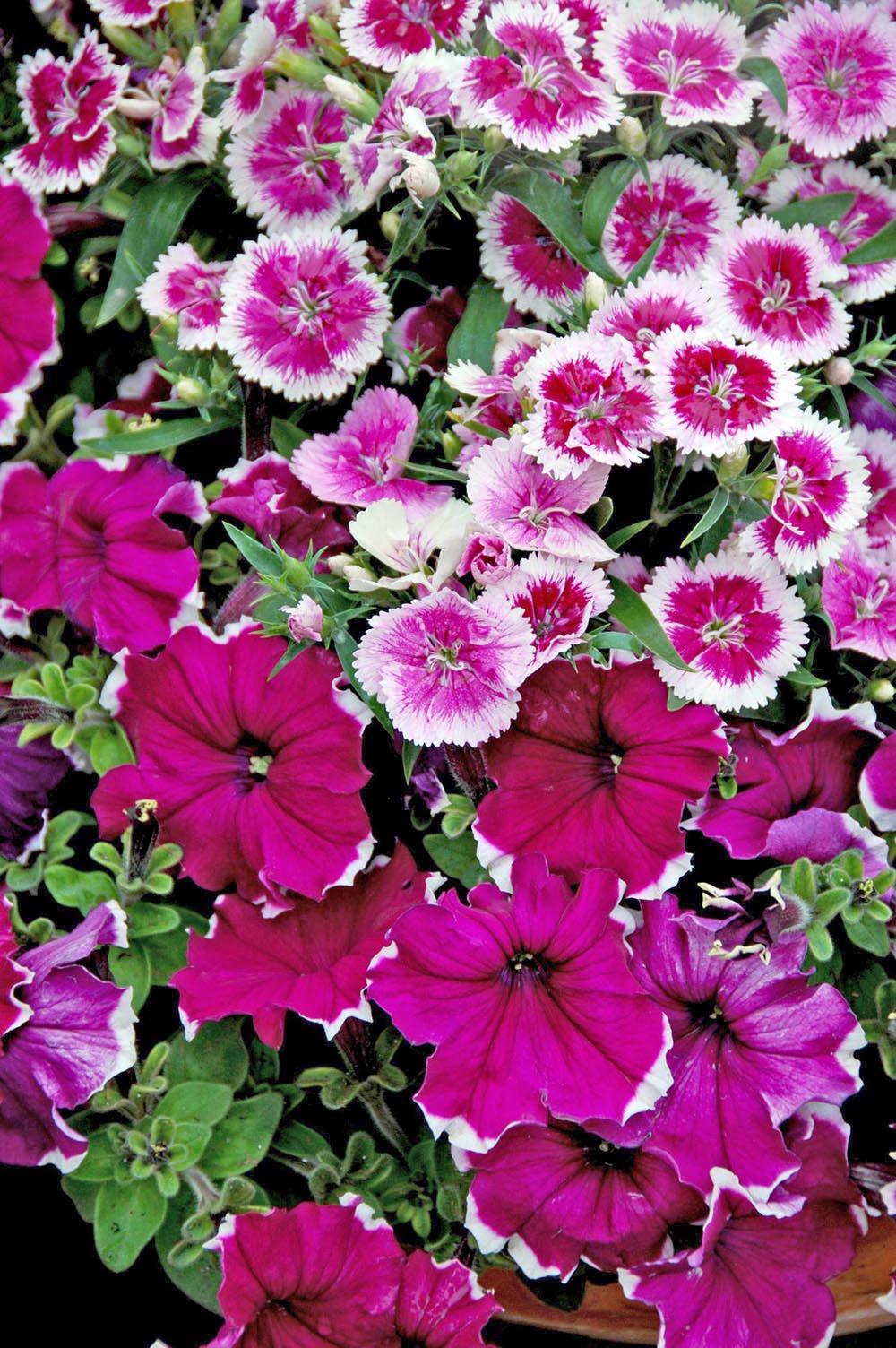Information Possibly Outdated
The information presented on this page was originally released on October 4, 2007. It may not be outdated, but please search our site for more current information. If you plan to quote or reference this information in a publication, please check with the Extension specialist or author before proceeding.
Dianthus offers great cool-season options
By Norman Winter
MSU Horticulturist
Central Mississippi Research & Extension Center
It seems like only yesterday that midday temperatures were reaching the century mark, and it was hard not to break a sweat, even on morning walks. Now, as the bright, crisp mornings greet us, we are reminded that cool-season planting time is upon us.
You may have already started with mums and even begun buying some daffodils, but as October gets under way, I would like you to consider the dianthus. Today's dianthus is a far cry from what we had 20 years ago from the standpoint of toughness and longevity. I know folks who have had Bouquet Purple return five years.
The Telstar series is still one of my favorites. It was first brought to my attention when it was chosen as a Louisiana Select plant. These delightful plants give outstanding colors in scarlet, pink, purple, salmon and purple picotee. In addition to their cheerful colors, they also have an enticing fragrance.
This past spring, I had the opportunity to see a wonderful planting of Telstar Purple Picotee dianthuses and Symphony Burgundy Picotee petunias. This beautiful monochromatic spring garden showed off the two members of the close-knit violet family of color -- burgundy and purple. The purple in the Telstar dianthus looked to have only a very subtle difference from the burgundy of the Symphony petunia.
Both flowers had a tie-in from white as well. The typical thought is purples and violets are a little subdued in the garden and may go unnoticed on occasion. The white, however, gave them the attention they deserved in the landscape.
If that wasn't enough, both are picotee. This description originated in the early 1700s and refers to a type of flower with pale petals bordered by a darker color.
The Telstar dianthus series reaches about 8-10 inches in height and can tolerate hot as well as frigid temperatures. When preparing a bed, incorporate 2 pounds of a slow-release, 12-6-6 fertilizer with minor nutrients per 100 square feet of bed space. Give plenty of sun so they will bloom to their potential. Plant at the same depth they are growing in the container in the fall or spring, spacing plants 6-8 inches apart.
Lightly side-dress with fertilizer once a month to keep them growing and producing. Keep your hybrid pinks mulched to conserve moisture, deter weed growth and give added cold protection. Mulch also keeps summer soil temperatures cooler, increasing your chances of keeping them around for multiple years. Deadhead old blossoms to keep the plant looking tidy and the flower stems coming.
Dianthuses like the Telstar series allow for partnering with cool-season crops like pansies, violas, snapdragons and flowering kale or cabbage. I also had the opportunity to see a bed of Telstar Salmon dianthuses and Gem Lavender Shades violas. This type of planting will last from fall through late spring.
In addition to the Bouquet and Telstar series, look for the Ideal series that has proven the best in University of Georgia trials. Ideal Carmine and Ideal Rose were chosen as Flueroselect Quality Mark winners, and Ideal Violet was an All-America Selections award-winner. The Melody series offers several choices, and the Melody Pink was chosen as an All-America Selections winner.
Regardless, if you haven't tried dianthus in several years, the new hybrids may surprise you with their color, cold-hardiness and residual vigor in subsequent years.
A great time to see some of these plants is at the Fall Flower and Garden Fest on Oct. 12-13. The annual event is at Mississippi State University's Truck Crops Experiment Station on Highway 51, just south of Crystal Springs. Hours are 9 a.m. until 2 p.m. Call (601) 892-3731 for more information.




